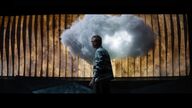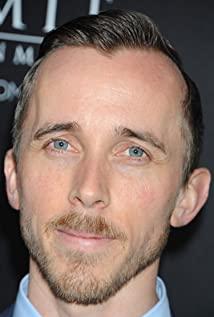The front is a little sluggish, and I don't understand why it concentrates all the good drama in the back. Can't make it out before?
When I first watched it, I really felt that the male protagonist and his girlfriend would definitely be separated, thinking it was a mother-in-law movie about their life problems (almost impossible to watch). Their status is real, but it seems like the "break-up real".
I looked into it from the 11min car accident. The details of the buckle seat belt girlfriend are well received.
Killing people there. The slaughterhouse is visual. Gave girlfriend shots, from gasp to death. Coupled with the lines, this paragraph is very poking and painful.
Here's how it unfolds: a whole shaky shot. From double to single villain with relationship, close-up, gunshots, the male protagonist immediately rushed up, and the camera took the girlfriend who lay down and gasped. The mood is broken here, there's a celestial lens analyzing the crime scene - it shouldn't be. Then back to the girlfriend who was lying down and gasping, the male protagonist shouted, and the little minions shot the male protagonist with a voice. Picking up his girlfriend's gasp, the little guy sarcastically "only death will separate us", and the male protagonist lies on his stomach. Cut shot, close-up of girlfriend, relationship shot of two people, male protagonist's voice, "I can't reach you", close-up of male protagonist, girlfriend looking at male protagonist, close-up, death. Male lead voice, "no", male lead close-up, pain. A close-up of the female protagonist, the male protagonist crying silently. The two hands are out of reach.
(In this paragraph, the villain's oral broadcast about "high and low classes" is still suffocating)
What does that panorama shake shot mean—? Machine point of view?
The male protagonist comes out in a wheelchair, the back view is fully defocused, and the voice information. The male protagonist's girlfriend died of the machine, but the male protagonist had to succumb to the machine. Panorama, the male protagonist is in the middle of the machine, strangely motionless.
Use light, gray, white, textured, red, blue, Saturn colored apertures. Fake rocks and mossy trees.
Cool blue light - I'm never going to think this cool blue is realism again in my life, I swear.
Blue-yellow light.
25min for surgery. This part is disgusting and beautiful. The combination of people and images during surgery. ai?
The lens after the surgery feels so new! The camera moves ahead of the male protagonist, and the machine takes the man away. But I'm really getting dizzy.
Chi Brain's intracranial sound effects are also well done. I'm really, dizzy, and spit out my lunch.
It's interesting to screen your thoughts on a transparent table for others to screen.
(I can't keep up with the plot since 37min)
However, the rhythm of this fight is very interesting, but it is a bit chaotic. It may be more comfortable if the effect can be achieved in a unified way. At first in the house, the part behind the yellow curtains is very musical, and the part in the kitchen is very funny, then back in the house, the male protagonist cuts the mouth of the little guy with a knife, very scary woc
One thing to say, Zhinao acted as an oral broadcaster in the dialogue between the female police officer and the male protagonist.
(It's really beautiful after the black people are lit) (It's red and blue again...)
The scene at the Skull Bar is quite interesting. Very restless, very underground, it feels like a restoration of some kind of comic scene. The action of the male protagonist drinking in a wheelchair is praised, very cool.
The fight scene after 52 minutes is the fault of the fight scene above. Not sure if the protagonist wants self-awareness or a commercial sense of humor?
How should I say it, if the fighting itself is aesthetically pleasing and musical, I might still have to watch martial arts. The beauty in this film is a mixed-cut beauty.
The sense of terror comes from what the camera does not let people see, it should be the expression and voice of the male protagonist with the camera's face. If you look directly at the flesh torn apart, it's not a sense of horror, it's a pain (my mouth ulcers are aching!).
The sense of humor comes from the character who complains, which is more like Venom here. This sense of humour...I don't quite laugh it off, but it's a "business" laugh.
In 58 minutes, the male protagonist walked out of the alley. After the scientist looked at the computer, the male protagonist recorded the code on his arm to download the Trojan virus, and a police car passed by—I really like that part! Well done, there is a sense of absurdity between the virtual and the real, it just feels like an expression I can use.
This entire audiovisual is very attractive, from the male protagonist lying down to going up the stairs, but it is cut off again, oops! I start from 1h. The male protagonist is crawling in the twilight (?) of the ground, with an intellectual perspective, and the camera shakes back and forth (this shot is very careless, you see, I can think of it). Tilt the lens. Low frequency brain action sound - this low frequency sound is very nice (I started to notice this low frequency sound from aespa's video).
I like the orange and green light here. But that female hacker...ugly.
1h2min where the villain yawns and then all shoots at the bartender's tiny robots with steel spikes - eh, I always feel like I should have seen this kind of spectacle in the Hitchhiker's Guide to the Galaxy movie more than in this movie. This one is quite imaginative.
At 1h6min, the villain came over, and the male protagonist had no hope of crawling. It was a bit like the gold digger's survival in the wilderness written in a certain Chinese text (Oh, it turns out that I was fed by that kind of text, what kind of sick and old wolf, pink skeletons...). The bass sounds great. Here the heroine appears, but I don't understand: because they are not family couples themselves.
Oops, the cliché of the plot has appeared again, and the brain has woken up at this time.
1h9min where the city background - am I right? Is it real? It feels the same as the city in "Men in Black".
For 1h14min, Zhinao's voice is clean and the pause is very good.
1h20min, the green light and blue light of the confrontation between the villain and the male protagonist. I like this light.
The final truth: They are here to cut off the back of the male protagonist's neck, because...?
Okay, everyone started playing again, 1h23min. This is... a top fight scene, punch to the flesh. Ah, I really can't make a commercial like this, really.
The villain has a brother who is a drug addict. The male protagonist killed his brother. In the first fight, the one with glasses.
Well, the male protagonist's attitude shots are never lacking. Even if he kills people, he does this and that, but he is still a positive protagonist. "I'm not proud of that."
Because: that scientist, the real villain, uses the male protagonist as an experimental tool. Ah that's not the truth either.
The 1h28min fight was also interesting, beating up a black woman because she couldn't control herself (this is really--). Then let the policewoman electrocute him (the policewoman, why did you go there earlier).
Ahem, because scientists are now under the command of a certain "person", that is, the brain. Because Zhinao wanted to be human, he chose the male protagonist as the carrier. Because the male protagonist is very old-fashioned, he is a pure human being and has never implanted any machine, so he was selected by Zhinao.
1h31min, Zhinao told the scientist to put down the gun, the scientist obeyed, and the next second, the male protagonist stood up and killed the scientist. The jump scares here are good.
Details of the hand, the hand with the knife inserted. The voice of the brain tells the scientists to put down their guns, and the male protagonist tells the scientists not to listen to it. The scientist turned his head, and the male protagonist appeared to his right.
The male protagonist didn't want to kill the police officer, so he committed suicide, woke up, and went back to the hospital bed. His hands can move. There are also good things like this, getting rid of intellectual brains, getting rid of legal sanctions, and his girlfriend is back. This is true and false.
Cut back to the scene, the main man kills the police officer, and now the brain has occupied his brain - this part is actually done very well, the personification of the brain, I really like this part. Cross-cutting, Zhinao turned around stiffly, until the movement became gradually humanized, licked blood, and made a sound. The male protagonist hugs the female protagonist on a white hospital bed.
(I know why it is so high, and I like it. Action. The sense of ritual and wildness of the picture. The sound. And its audio-visual realism is very realistic, and some indoor scenes are also impressive - such as The bar, the fact that scientists are indeed villains—among other things, is understandable.)
View more about Upgrade reviews











